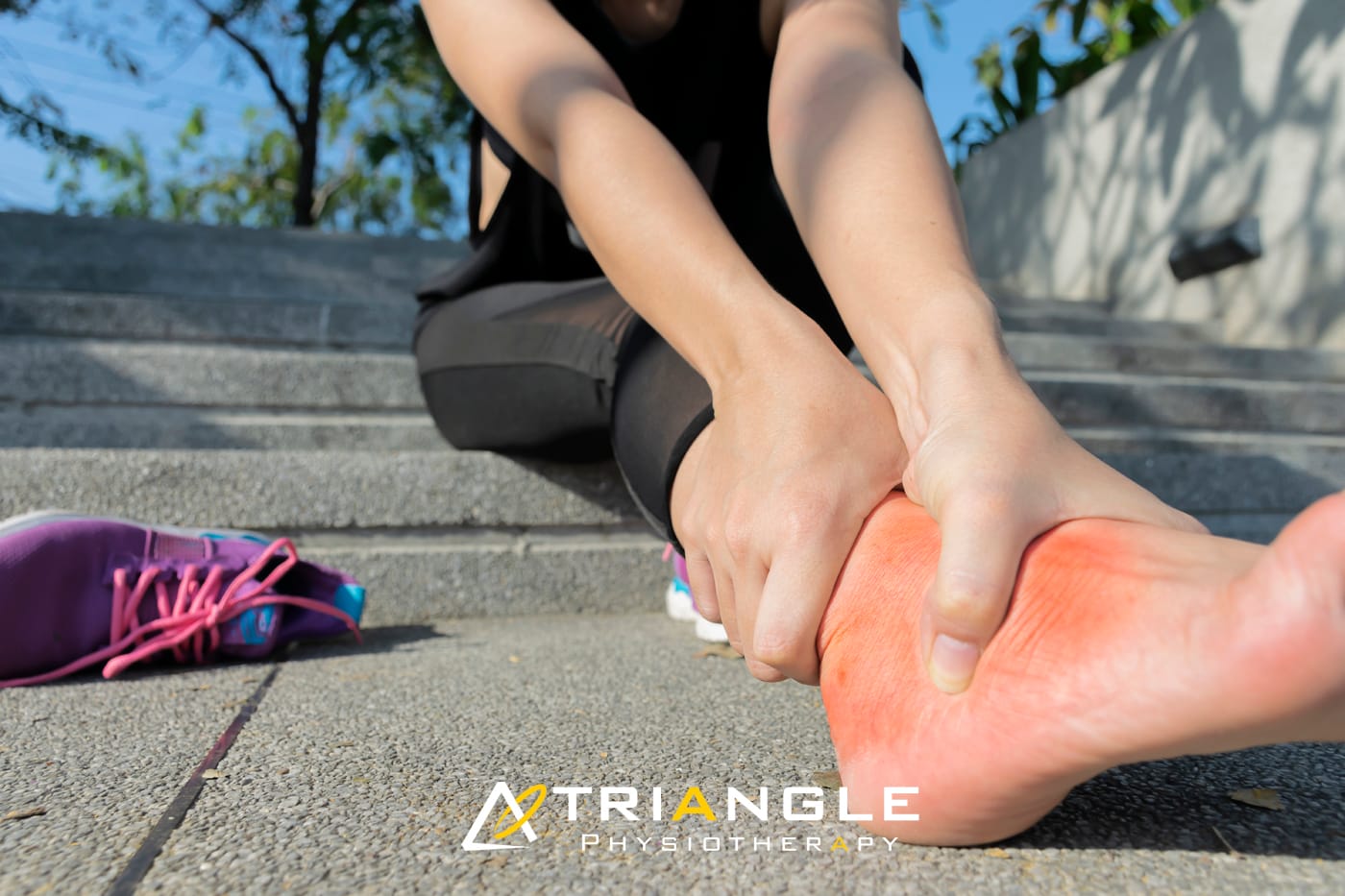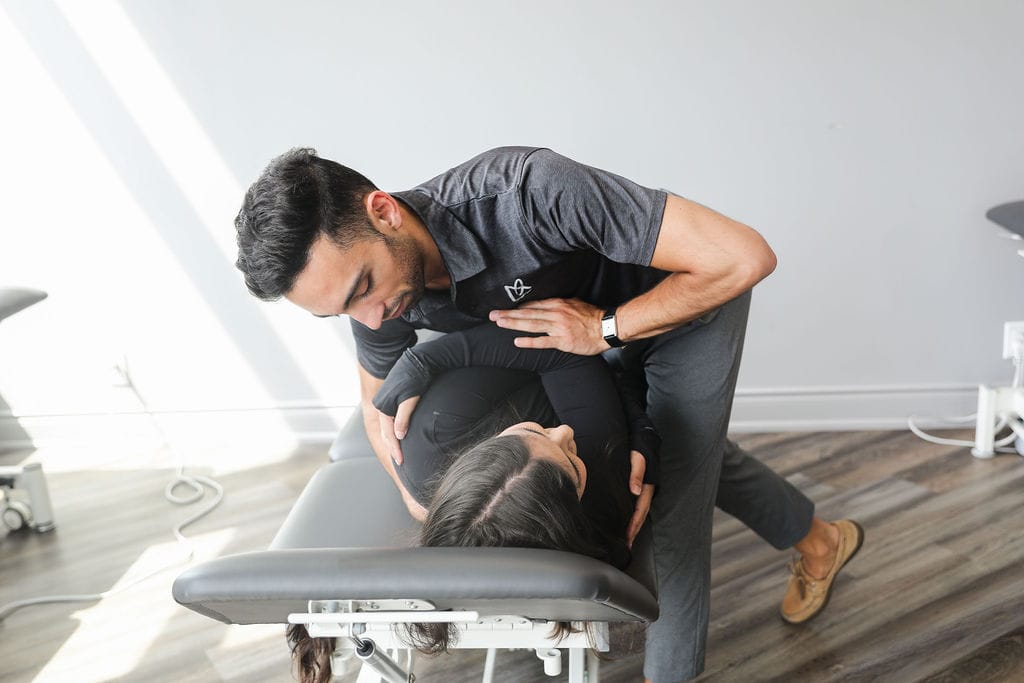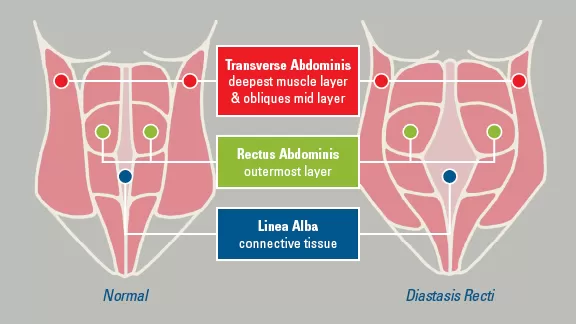Ankle pain can be a major hindrance to our daily activities, making it difficult to walk, run, or even stand for extended periods. Whether it’s due to an injury, chronic condition, or overuse, finding effective solutions to alleviate ankle pain is crucial for restoring mobility and strength. In this article, we will explore some expert tips on effective physiotherapy exercises for ankle pain, aiming to not only relieve discomfort but also enhance the overall function of your ankle. So, if you’re looking for ways to regain control over your ankle health, keep reading to discover these useful exercises and start your journey towards pain-free movement.
Understanding Ankle Pain: Causes and Symptoms
Ankle pain can be a debilitating condition that affects individuals of all ages, from young athletes to the elderly. Understanding the causes and symptoms of ankle pain is crucial in order to find relief and prevent further injury.
The symptoms of ankle pain can vary depending on the underlying cause. Common symptoms include swelling, tenderness, and stiffness. Individuals may also experience difficulty walking or bearing weight on the affected ankle. In some cases, ankle pain can be accompanied by bruising or a visible deformity.
Understanding the causes and symptoms of ankle pain is the first step towards finding relief and restoring functionality. By seeking proper diagnosis and following the guidance of healthcare professionals, individuals can benefit from effective physiotherapy exercises for ankle pain.

Importance of Physiotherapy in Ankle Pain Management
Physiotherapy plays a crucial role in the management of ankle pain. With the help of effective physiotherapy exercises specifically tailored to target the ankle, individuals can experience improvements in pain.
A key aspect of physiotherapy for ankle pain is restoring mobility. Through a range of exercises and techniques, physiotherapists work to increase the flexibility and motion of the ankle joint. These exercises may include stretching, range of motion exercises, and manual therapy techniques.
In addition to mobility, physiotherapy also focuses on enhancing the strength of the ankle muscles. Strengthening exercises, such as calf raises, ankle circles, and resistance band exercises, are often prescribed to improve the stability and support around the ankle joint. Stronger muscles can effectively help in absorbing shock and preventing further injuries.
Key Principles of Physiotherapy Exercises for Ankle Pain Relief
Physiotherapy Oakville exercises play a crucial role in providing relief from ankle pain. By incorporating specific exercises into a comprehensive treatment plan, individuals can restore mobility and strengthen their ankles, ultimately alleviating pain and preventing future injuries.
One key principle of effective physiotherapy exercises for ankle pain relief is restoring flexibility. Gentle stretches and range-of-motion exercises can help increase the flexibility of the ankle joint, which in turn improves overall joint function. Flexibility exercises may include ankle circles, toe curls, and calf stretches.
Additionally, proprioception exercises are integral to the rehabilitation process. Proprioception refers to the body’s ability to perceive its position in space. After an ankle injury, this sense may be disrupted, leading to balance issues and an increased risk of falls. Incorporating exercises that challenge balance and proprioception, such as standing on one foot or using a wobble board, can greatly improve overall stability and reduce ankle pain.
For optimal results and to ensure you are performing the exercises correctly, it is recommended to consult with your physiotherapist at Physiotherapy Oakville throughout your rehabilitation journey.
Strengthening Exercises for Ankle Stability and Support

If you’re someone who has experienced ankle pain or instability, you understand the importance of having strong and stable ankles. Whether you’re an athlete or simply want to prevent injuries, implementing effective physiotherapy exercises for ankle pain is essential for restoring mobility and strength.
One of the most effective exercises for improving ankle stability is the single-leg balance. This exercise involves standing on one leg and maintaining your balance for a set amount of time. Not only does this exercise strengthen the muscles surrounding your ankle, but it also improves proprioception, which is your body’s ability to sense its position in space. By practicing this exercise regularly, you can enhance your ankle stability and prevent future injuries.
Lastly, calf raises are a great exercise to target the muscles in your lower leg, including those surrounding your ankle. Stand with your feet hip-width apart and lift your heels off the ground as high as possible, then slowly lower them back down. This exercise specifically targets the gastrocnemius and soleus muscles, which play a significant role in ankle stability and support.
Neuromuscular Exercises for Pain Management and Prevention

Neuromuscular exercises are gaining popularity in the field of pain management and prevention. These exercises focus on strengthening the connection between the nervous system and the muscles, helping to alleviate pain and improve overall mobility. One area where these exercises have shown promise is in the treatment of ankle pain.
Effective physiotherapy exercises for ankle pain involve restoring mobility and strength to the affected area. These exercises may include ankle stretches, balance training, and resistance exercises. The goal is to target the specific muscles and ligaments surrounding the ankle joint, improving stability and range of motion.
Another exercise that can be beneficial is heel raises. This exercise involves standing on the edge of a step or curb and raising your heels as high as possible. This works the muscles in your calves, which can help support and stabilize the ankle joint.
Resistance band exercises are also effective in strengthening the ankle. These exercises involve using a resistance band to provide resistance during ankle movements, such as flexion, extension, inversion, and eversion. These movements help to target and strengthen the muscles that support the ankle joint.
Progressive Resistance Training for Ankle Strength and Functionality
Progressive resistance training is a highly beneficial approach for improving ankle strength and functionality. Whether you’re recovering from an injury or simply looking to enhance your athletic performance, incorporating effective physiotherapy exercises for ankle pain is crucial for restoring mobility and strength.
One of the most effective exercises for ankle strength is the calf raise. This exercise targets the muscles in the calves and ankles, helping to build strength and stability. Begin by standing with your feet hip-width apart, and then slowly rise onto the balls of your feet. Hold this position for a few seconds before slowly lowering your heels back down. To intensify the exercise, try performing it on a step, allowing your heels to drop below the level of the step before rising back up.
Another great exercise for ankle strength is the ankle dorsiflexion exercise. This exercise focuses on strengthening the muscles that enable you to flex your ankles upwards. Sit on a chair with your feet flat on the ground and place a resistance band around the ball of your foot. While keeping your heel on the ground, slowly pull your toes towards you against the resistance of the band. Hold for a few seconds and then release. Repeat this movement for several repetitions, gradually increasing the resistance as you progress.
Additionally, incorporating balance and proprioception exercises into your progressive resistance training routine can further enhance ankle strength and functionality. Exercises like single-leg stance or standing on an unstable surface, such as a balance board or foam pad, can help improve your body’s awareness of its position in space and challenge the stabilizing muscles around the ankle.
Incorporating Stretching and Flexibility Exercises in Your Routine
Incorporating stretching and flexibility exercises into your daily routine is essential not only for athletes but for anyone looking to improve their overall fitness and well-being.
The first step towards addressing ankle pain and improving flexibility is to consult with a physiotherapist who can assess your specific needs and design a personalized exercise plan. Common exercises used in physiotherapy for ankle pain include calf stretches, ankle rotations, and plantar fascia stretches. These exercises target the muscles and ligaments surrounding the ankle, increasing flexibility and reducing pain.
Tips for Safely Performing Physiotherapy Exercises for Ankle Pain
If you’re suffering from ankle pain and looking for effective ways to restore mobility and strength, physiotherapy exercises can be extremely beneficial. However, it’s important to approach these exercises with caution and prioritize safety to avoid further injury. Here are some tips to help you safely perform physiotherapy exercises for ankle pain.
First and foremost, always consult a professional physiotherapist before starting any exercise routine. They can assess your condition and recommend specific exercises that are best suited for your individual needs. This will ensure that you’re performing the right exercises and avoiding any that may exacerbate your pain.
It’s crucial to start slow and gradually progress as your ankle gains strength and flexibility. Avoid pushing yourself too hard or performing exercises that cause excessive pain. Remember to listen to your body and give it time to heal. Taking breaks in between exercises and giving yourself time for rest and recovery is equally important.
Conclusion
Don’t let these physical conditions ever ride on you. You can consult any of our locations of Triangle Physiotherapy or simply Book An Appointment online.
“Ankle pain can be managed effectively with the right physiotherapy exercises. At Triangle Physiotherapy, we provide expert care across the GTA, including Physiotherapy in Etobicoke, Oakville, North York, Toronto, Lawrence Park, Queens Quay, Erin Mills, Mississauga, and Liberty Village. Our experienced physiotherapists are here to help you regain strength and mobility in your ankles.”
Ankle rehabilitation through physiotherapy involves a systematic approach to regaining strength, flexibility, stability, and functionality after an ankle injury. Here’s a step-by-step guide:
Ankle Anatomy and Injury Overview
Ankles are complex joints that connect the lower leg bones (the tibia and fibula) to the foot bones (the talus and calcaneus). The anatomy of the ankle includes bones, ligaments, tendons, and muscles, all of which work together to provide stability, support, and mobility.
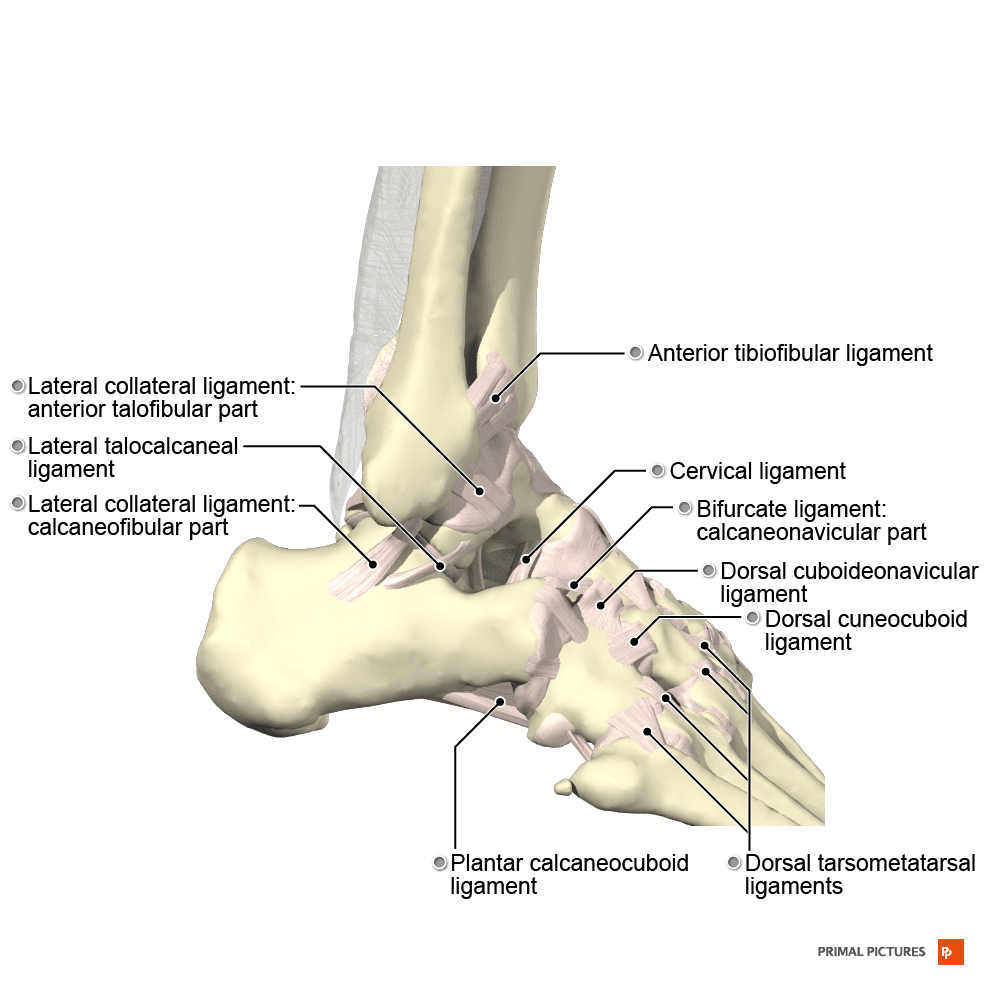
Common Ankle Injuries
- Sprains: Ankle sprains occur when the ligaments are stretched or torn, usually due to an inversion or eversion injury. Lateral ankle sprains, involving the ligaments on the outside of the ankle, are more common than medial ankle sprains.
- Fractures: Fractures can occur in any of the ankle bones, typically as a result of trauma or excessive force. The lateral malleolus (part of the fibula) and the medial malleolus (part of the tibia) are commonly fractured in ankle injuries.
- Achilles Tendon Rupture: This injury involves a tear or rupture of the Achilles tendon, often occurring during activities that involve sudden forceful plantarflexion of the foot.
- Tendinitis: Inflammation of the tendons around the ankle, such as the Achilles tendon or the peroneal tendons, can result from overuse, improper footwear, or biomechanical issues.
Why Physiotherapy for Ankle Rehabilitation?
Physiotherapy is a crucial component of ankle rehabilitation for several reasons:
- Expert Assessment: Physiotherapists are trained to assess musculoskeletal conditions and movement dysfunctions. They can accurately diagnose the extent and nature of the ankle injury, identifying specific impairments and deficits that need to be addressed.
- Individualized Treatment Plans: Physiotherapists develop personalized treatment plans tailored to each patient’s needs, considering factors such as the severity of the injury, functional limitations, and personal goals. This ensures that rehabilitation is targeted and effective.
- Pain Management: Ankle injuries often result in pain and inflammation. Physiotherapists employ various modalities and techniques to manage pain, such as manual therapy, modalities like ultrasound or electrical stimulation, and therapeutic exercises designed to alleviate discomfort.
- Restoration of Function: Physiotherapy aims to restore optimal function to the ankle joint. Therapists use a combination of exercises, manual therapy, and functional activities to improve range of motion, strength, flexibility, and proprioception.
- Prevention of Complications: Without proper rehabilitation, ankle injuries can lead to complications such as chronic pain, stiffness, weakness, instability, and increased risk of re-injury. Physiotherapy helps prevent these complications by promoting optimal healing and restoring normal function.
- Optimizing Recovery Time: Physiotherapy can expedite the recovery process by facilitating tissue healing, reducing swelling, and promoting efficient movement patterns. This can help patients return to their normal activities, work, and sports sooner than if they were to rely solely on rest and self-management.
- Education and Empowerment: Physiotherapists educate patients about their injury, rehabilitation process, and strategies for injury prevention. By understanding their condition and how to manage it, patients feel empowered to take an active role in their recovery and make informed decisions about their health.
- Customized Rehabilitation Programs: Physiotherapists design comprehensive rehabilitation programs that evolve as the patient progresses. These programs include a combination of therapeutic exercises, manual therapy, modalities, and functional training tailored to address the specific needs and goals of the individual.
- Coordination of Care: Physiotherapists often work closely with other healthcare professionals, such as orthopedic surgeons, sports medicine physicians, and athletic trainers, to ensure comprehensive and coordinated care for the patient. This multidisciplinary approach optimizes outcomes and promotes continuity of care.
Step-by-Step Ankle Rehabilitation Through Physiotherapy
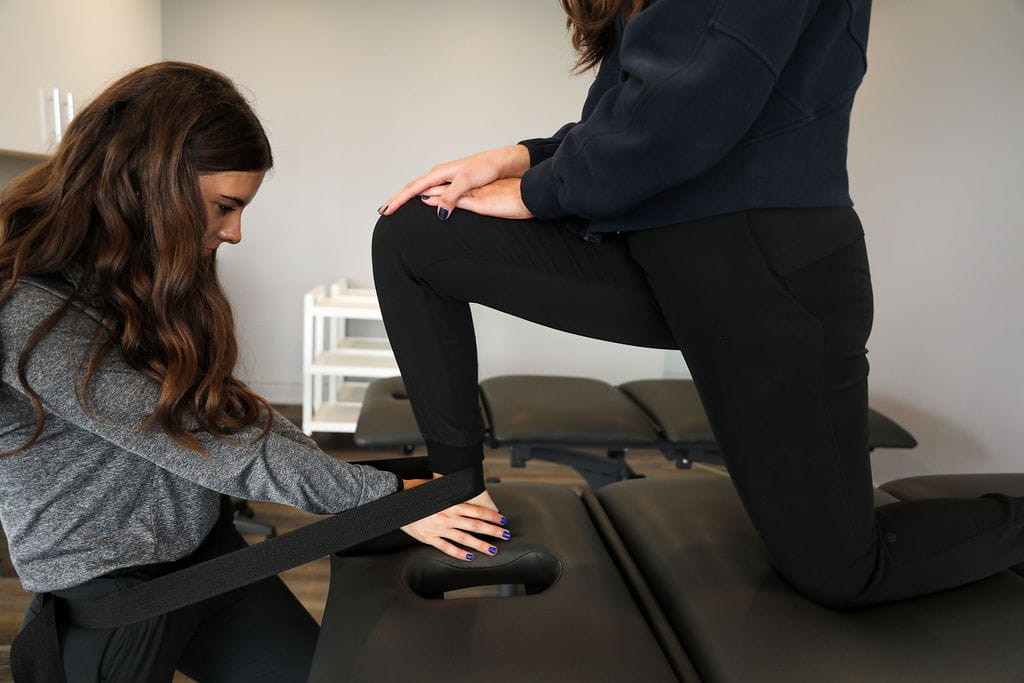
Step 1: Initial Assessment
Our physiotherapist will conduct a thorough assessment of your condition, including a detailed medical history review and a physical examination. This step helps us understand your specific concerns and develop an appropriate treatment plan.
Step 2: Pain Management
Physiotherapy plays a significant role in pain management through various techniques and modalities tailored to each individual’s needs.
Pain management techniques that may be used in your rehabilitation are:
- Heat/Cold Therapy
- Manual Therapy
- Electrotherapy
- Education and self-management strategies
- Activity modification
Step 3: Range of Motion Exercises
Step 4: Strengthening Exercises
Step 5: Balance and Proprioception
Step 6: Education and Prevention
Click here to book an appointment with a physiotherapist at one of our eight locations.
- Physiotherapy Etobicoke – Triangle Physiotherapy Etobicoke
- Oakville Physiotherapy Clinic – Triangle Physiotherapy Oakville
- Physiotherapy North York – Triangle Physiotherapy North York
- Mississauga Physiotherapy Clinics – Triangle Physiotherapy Mississauga
- Downtown Physiotherapy Clinics – Triangle Physiotherapy King West
- Uptown Physiotherapy Clinics – Triangle Physiotherapy Lawrence Park
- Physiotherapy Clinic Downtown Toronto – Triangle Physiotherapy Queens Quay
- Physiotherapy Clinics Mississauga – Triangle Physiotherapy Erin Mills
“Effective ankle rehabilitation requires expert physiotherapy care. Triangle Physiotherapy offers specialized services across the GTA, including Physiotherapy in Etobicoke, Oakville, North York, Toronto, Lawrence Park, Queens Quay, Erin Mills, Mississauga, and Liberty Village. Our experienced team is here to help you recover strength, mobility, and confidence in your ankles.”
What is Sciatica?
Sciatica is a term used to describe a condition that affects the sciatic nerve in the leg. The client generally experiences pain and/or tingling, and numbness along the course of the nerve. This condition typically initiates in the lower back and the symptoms travel down the leg. The sciatic nerve originates by union of several nerve roots in the lower back and forms the largest nerve in the body. The sciatic nerve then passes through bony tunnels and various muscles which are compactly arranged and terminates in the knee. If the nerve gets irritated anywhere during this course, it may lead to Sciatica. The other most common cause is a ruptured intervertebral disc which may press on the nerve.
What are the symptoms of Sciatica?
- Pain – begins in the lower back and proceeds along the length of the nerve. It can be mild/sharp/excruciating. It may be constant or at intervals.
- Tingling &/or numbness- also along the length of the nerve.
- Muscle weakness may be present in the leg or the foot.
- Affected by posture
What are the causes of Sciatica?
Some of the most common causes of sciatica are:
- Herniated disc
- Degeneration of lumbar spine
- Spinal stenosis
- Trauma or fracture to the spine
- Irritation of sacroiliac joint
- Piriformis syndrome
- Muscle tightness such as that of the hamstring
What are the 7 best exercises for Sciatica?
Some of the most effective exercises for sciatica are:
- Pelvic Tilts: Lie on your back with knees bent and feet flat on the floor. Tighten your abdominal muscles and tilt your pelvis upward slightly, flattening your back against the floor. Hold for a few seconds, then release. Repeat several times.
- Piriformis Stretch: Sit on a chair with feet flat on the floor. Cross the affected leg over the opposite knee, then gently lean forward while keeping your back straight. Hold the stretch for 15-30 seconds and repeat on the other side.
- Hamstring Stretch: Lie on your back with one leg bent and the other extended straight up. Hold the back of your thigh of the straight leg with both hands and gently pull it towards your chest until you feel a stretch in the hamstring. Hold for 15-30 seconds and switch legs.
- Seated Spinal Twist: Sit on the floor with legs extended in front of you. Bend one knee and place the foot on the outside of the opposite knee. Twist your torso towards the bent knee, placing the opposite elbow on the outside of the bent knee. Hold for 15-30 seconds and switch sides.
- Child’s Pose: Start on your hands and knees, then sit back on your heels while reaching your arms forward on the ground. Hold the stretch, feeling the elongation in your spine and lower back. Hold for 15-30 seconds and repeat as needed.
- Cat-Cow Stretch: Start on your hands and knees in a tabletop position. Inhale, arching your back and lifting your head and tailbone towards the ceiling (Cow Pose). Exhale, rounding your back and tucking your chin to your chest (Cat Pose). Repeat for several breaths.
- Bridging: Lie on your back with knees bent and feet flat on the floor. Engage your core and glutes as you lift your hips towards the ceiling, creating a straight line from shoulders to knees. Hold for a few seconds, then lower back down. Repeat for several repetitions.
How do I book an appointment at a Triangle Physiotherapy Clinic near me?
Click HERE to book an appointment with a physiotherapist at one of our eight locations.
- Physiotherapy Etobicoke – Triangle Physiotherapy Etobicoke
- Oakville Physiotherapy Clinic – Triangle Physiotherapy Oakville
- Physiotherapy North York – Triangle Physiotherapy North York
- Mississauga Physiotherapy Clinics – Triangle Physiotherapy Mississauga
- Downtown Physiotherapy Clinics – Triangle Physiotherapy King West
- Uptown Physiotherapy Clinics – Triangle Physiotherapy Lawrence Park
- Physiotherapy Clinic Downtown Toronto – Triangle Physiotherapy Queens Quay
- Physiotherapy Clinics Mississauga – Triangle Physiotherapy Erin Mills
“Dealing with sciatica can be challenging, but with the right exercises and physiotherapy, relief is within reach. Triangle Physiotherapy offers specialized care across the GTA, including Physiotherapy in Etobicoke, Oakville, North York, Toronto, Lawrence Park, Queens Quay, Erin Mills, Mississauga, and Liberty Village. Our expert team is dedicated to helping you manage and alleviate sciatica pain effectively.”
What is the difference between a physiotherapist, massage therapist, and chiropractor?
Which practitioner is the best to see?
This is one of the most common questions that we get asked! Let’s dive in and learn more about how each of these practitioners can make a difference to your health.
What are the similarities between physiotherapists, massage therapists, and chiropractors?
- They treat musculoskeletal conditions – soft tissue (muscles, ligaments, tendons), bones, or the nervous system.
- All three are regulated professions – you cannot call yourself an RMT, chiropractor, or physiotherapist unless you are registered with their regulatory College.
- They all have specialized training – Physiotherapists at a recognized university, Chiropractors at a recognized Chiropractic College, and RMTs at a recognized Massage therapy course.
- All three have to pass exams administered by their regulatory board.
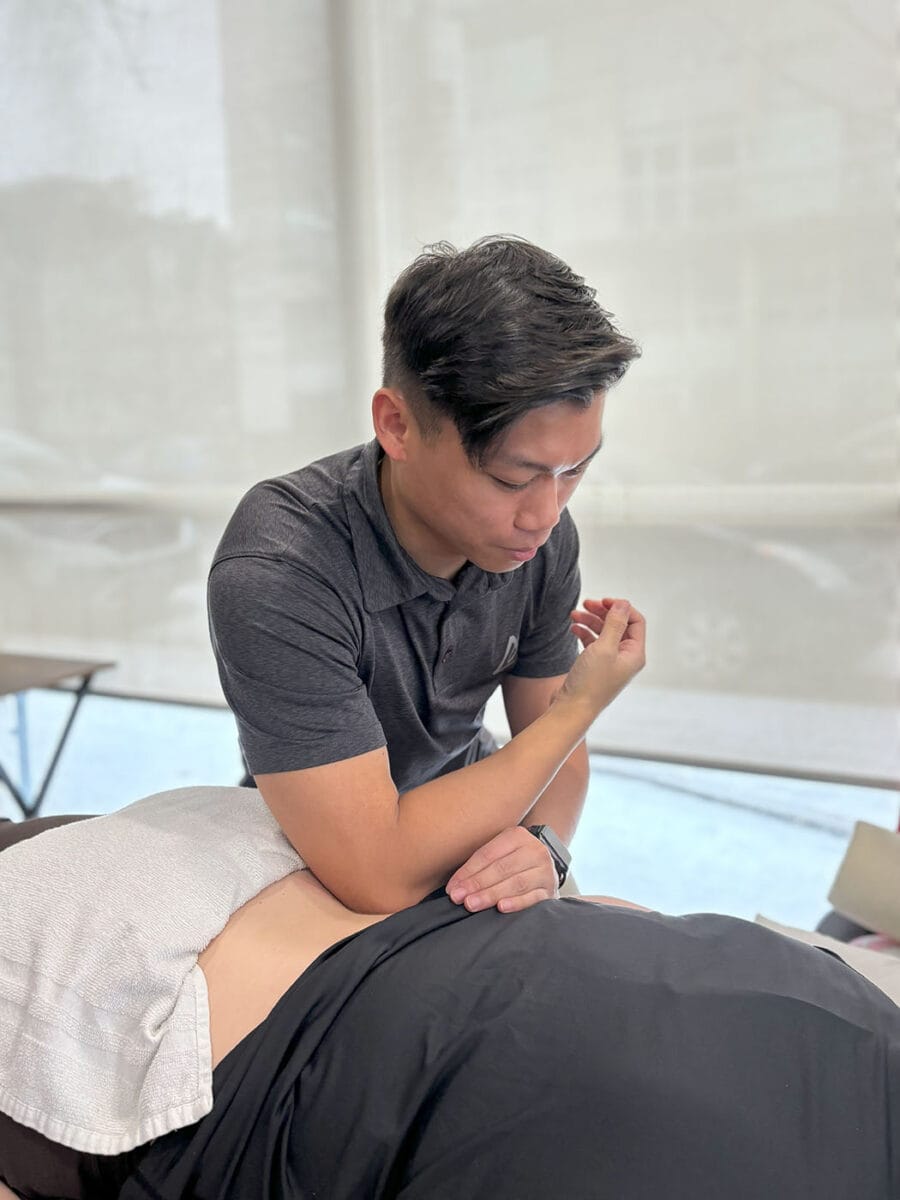
What does a Chiropractor do?
Chiropractic is a licensed healthcare profession that emphasizes the body’s ability to heal itself. Treatment typically involves manual therapy, often including spinal manipulation which helps restore joint function.
What does an RMT do?
An RMT, or Registered Massage Therapist, is a licensed healthcare professional who specializes in providing therapeutic massage treatments. They are trained to assess and treat various musculoskeletal conditions and injuries using hands-on techniques to manipulate muscles, tendons, ligaments, and other soft tissues of the body.
What does a physiotherapist do?
You should consider seeing a physiotherapist when you’re experiencing pain or discomfort, or have mobility issues that affect your daily activities and quality of life. Physiotherapists are healthcare professionals trained to diagnose and treat a wide range of musculoskeletal and movement-related conditions. They can also help with vestibular rehabilitation and pelvic health issues.
Physiotherapists can look at alignment but they also test joint mobility, muscle strength, muscle flexibility, nerve function, posture, and movement patterns. They restore movement and improve pain predominantly through exercise rehabilitation, postural re-training, and lifestyle advice, but also use hands-on techniques.
Can I see all three of these practitioners?
Absolutely! All three practitioners work collaboratively to get you the best possible outcomes and help you reach your health goals.
How do I book an appointment at a Triangle Physiotherapy Clinic near me?
Click HERE to book an appointment with a physiotherapist, RMT or chiropractor at one of our eight locations.
- Physiotherapy Etobicoke – Triangle Physiotherapy Etobicoke
- Oakville Physiotherapy Clinic – Triangle Physiotherapy Oakville
- Physiotherapy North York – Triangle Physiotherapy North York
- Mississauga Physiotherapy Clinics – Triangle Physiotherapy Mississauga
- Downtown Physiotherapy Clinics – Triangle Physiotherapy King West
- Uptown Physiotherapy Clinics – Triangle Physiotherapy Lawrence Park
- Physiotherapy Clinic Downtown Toronto – Triangle Physiotherapy Queens Quay
- Physiotherapy Clinics Mississauga – Triangle Physiotherapy Erin Mills
Choosing between a physiotherapist, massage therapist, or chiropractor depends on your specific health needs and goals. If you’re considering physiotherapy in Etobicoke, Oakville, North York, Toronto, Lawrence Park, Queens Quay, Erin Mills, Mississauga, or Liberty Village, skilled physiotherapists are available to help you decide on the best care plan for optimal health and recovery.
Golf is known for its emphasis on skill, strategy, and etiquette, and it is enjoyed by millions of people worldwide. Apart from the swing, optimal golf performance involves perfect coordination between physical fitness, technique, and mental focus. Physiotherapy is increasingly used by golfers to enhance their game, to optimize golf performance.
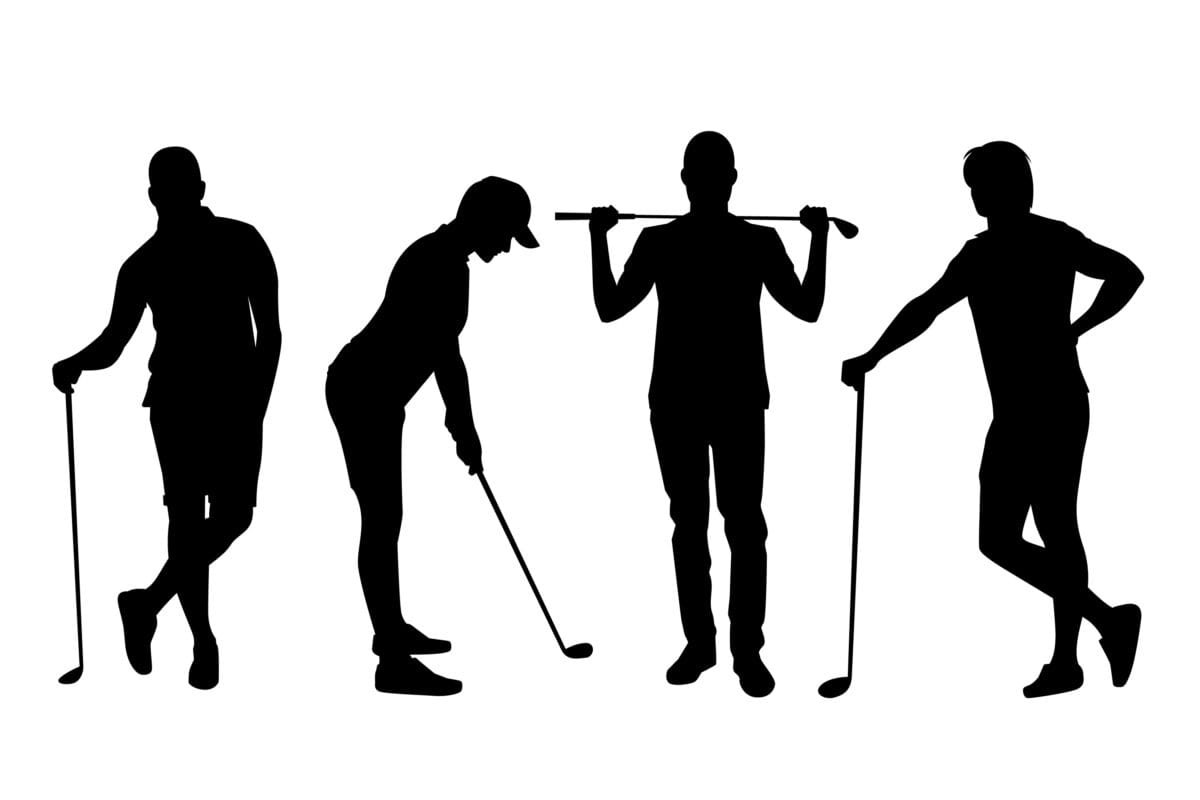
What are the key physical attributes essential to a good golf game?
- Core Strength and Stability for Swing Power
- Spine and Cervical Rotation for Swing Rotation
- Wrist and Forearm Mobility for Control
- Lower Body Mobility for Distance
- Pelvic Tilt for Power and Control
- Single Leg Balance for Stability
What are the most common golf injuries?
The most common Golf injuries are:
Tendinitis:
Tendinitis is caused by overuse or repetitive movements, especially during activities such as sports, gardening, or typing, notably in elbows (tennis elbow and golfer’s elbow) and wrists. The symptoms are: aching, tenderness, and swelling around the affected joint during and after play.
How to prevent tendinitis:
- Warm-up and cool-down: stretch before and after each round.
- Proper form: Ensure that you use proper technique and form. Improper technique can put excessive stress on tendons and increase the risk of tendinitis.
- Listen to your body: Pay attention to any signs of discomfort or pain during physical activity. If you experience persistent pain or discomfort in a tendon, stop the activity and rest. Continuing to push through pain can exacerbate the injury and lead to more severe problems.
Shoulder Injuries:
Shoulder injuries related to golfing are relatively common, particularly among avid golfers or those who engage in the sport frequently without proper technique or conditioning. The golf swing involves complex movements that can place stress on various parts of the body, including the shoulders.
How to prevent shoulder injuries:
- Warm-up: perform a thorough warm-up routine that includes dynamic stretches and exercises to prepare your muscles and joints for the golf swing.
- Maintain good posture: PWork with a golf instructor to ensure that your golf swing technique is sound and biomechanically efficient. Proper swing mechanics can help reduce stress on the shoulders and decrease the risk of injury. Pay attention to your posture, grip, and rotation throughout the swing.
- Gradual progression: Pace yourself during your round of golf and avoid swinging too forcefully, especially if you’re fatigued.
Back Pain:
The repetitive motion of the golf swing, combined with the rotational forces generated by the movement, can place stress on the muscles, ligaments, and joints of the back, leading to discomfort or injury. The symptoms are: Aching, stiffness, or sharp pain in the lower back, sometimes radiating down the legs.
How to prevent back injuries:
- Core strengthening exercises
- Posture: Avoid excessive rounding or arching during swings.
- Proper lifting techniques: Avoid bending from the back during activities.
Knee Problems:
Knee problems are caused by pivoting motions and uneven terrain stress knees, causing tendonitis, patellar instability, and arthritis. The symptoms are:
- Symptoms: Knee pain, swelling, and stiffness, especially during weight-bearing activities.
How to prevent knee problems:
- Strengthening exercises: Target hamstrings, quads, and calves for knee stability.
- Proper footwear: Select supportive shoes with good traction for uneven surfaces.
- Warm-up and cool down: Prepare knee joints before play and stretch after the game.
How do I prevent golf injuries?
Seeing a physiotherapist before golfing season is highly recommended. Your physiotherapist will help you with:
- Strengthening: Strengthen core, shoulder, and leg muscles with planks, lunges, and rotator cuff exercises. A strong foundation makes your body resilient to swing demands.
- Flexibility: Maintain spine, hip, and shoulder range of motion for a smoother swing. Incorporate gentle stretches and yoga poses to reduce muscle strains.
- Balance and Proprioception: Improve balance and body awareness with single-leg stances and wobble board exercises. Prevent awkward falls on the course.
How do I book an appointment with a Physiotherapist near me?
Click HERE to book an appointment with a physiotherapist or chiropractor at one of our eight locations.
- Physiotherapy Etobicoke – Triangle Physiotherapy Etobicoke
- Oakville Physiotherapy Clinic – Triangle Physiotherapy Oakville
- Physiotherapy North York – Triangle Physiotherapy North York
- Mississauga Physiotherapy Clinics – Triangle Physiotherapy Mississauga
- Downtown Physiotherapy Clinics – Triangle Physiotherapy King West
- Uptown Physiotherapy Clinics – Triangle Physiotherapy Lawrence Park
- Physiotherapy Clinic Downtown Toronto – Triangle Physiotherapy Queens Quay
- Physiotherapy Clinics Mississauga – Triangle Physiotherapy Erin Mills
Improving your golf game this spring can greatly benefit from the right physical conditioning and expert guidance. For personalized support, consider physiotherapy in Etobicoke, Oakville, North York, Toronto, Lawrence Park, Queens Quay, Erin Mills, Mississauga, or Liberty Village. Skilled physiotherapists in these areas can help you enhance your strength, flexibility, and overall performance on the golf course.
What is Diastasis Recti?
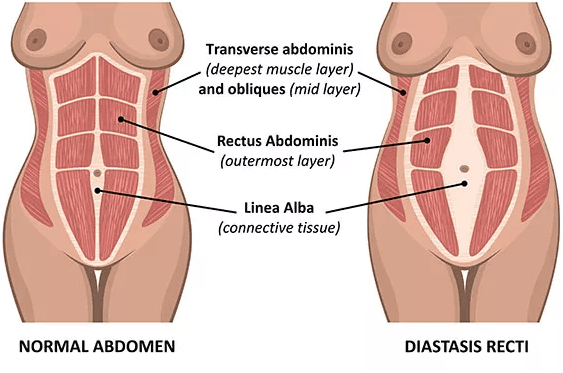
Diastasis recti is a condition where the right and left sides of the rectus abdominis (the “six-pack” muscles) separate, causing a gap in the abdominal wall. This condition is relatively common, especially among pregnant women and newborns, but it can affect individuals of any age or gender.
What are the causes of Diastasis Recti?
Diastasis recti often occurs during pregnancy due to the expanding uterus putting pressure on the abdominal muscles. It can also result from rapid weight gain or loss, improper lifting techniques, excessive abdominal exercises, or genetics.
What are the symptoms of Diastasis Recti?
The most noticeable symptom of diastasis recti is a visible bulge or ridge running down the midline of the abdomen, particularly noticeable when the person tries to sit up or strain. Other symptoms may include lower back pain, poor posture, and difficulty with core strength and stability.
How can it be treated?
Treatment options for diastasis recti may include physical therapy exercises to strengthen the abdominal muscles, wearing an abdominal binder or splint to provide support, and in severe cases, surgery to repair the separated muscles. It’s essential to consult a physiotherapist at Physiotherapy Oakville for personalized advice on treatment options.
Diastasis recti commonly occurs during pregnancy and may persist postpartum. Women who experience diastasis recti after childbirth should consult with a physiotherapist at Physiotherapy Oakville for guidance on safe exercises and techniques to promote healing and recovery. Joining Physiotherapy Oakville can provide you with the expert support needed to effectively manage and overcome diastasis recti.
Where can I find a pelvic health physiotherapist in Mississauga?
We have 8 locations with pelvic health physiotherapists to help you.
- Pelvic Health Physiotherapy Etobicoke – Triangle Physiotherapy Etobicoke
- Oakville Pelvic Health – Triangle Physiotherapy Oakville
- Pelvic Health Physiotherapy North York – Triangle Physiotherapy North York
- Mississauga Pelvic Health – Triangle Physiotherapy Mississauga
- Downtown Pelvic Health – Triangle Physiotherapy King West
- Uptown Toronto Pelvic Health – Triangle Physiotherapy Lawrence Park
- Pelvic Physiotherapy Downtown Toronto – Triangle Physiotherapy Queens Quay
- Mississauga Pelvic Health – Triangle Physiotherapy Erin Mills
Managing diastasis recti effectively often involves targeted physiotherapy to strengthen the core and restore function. If you’re looking for specialized care, consider physiotherapy in Etobicoke, Oakville, North York, Toronto, Lawrence Park, Queens Quay, Erin Mills, Mississauga, or Liberty Village. Experienced physiotherapists in these locations can provide tailored treatment plans to help you recover and regain strength.
Gardening is a deeply rewarding hobby, but for many enthusiasts, it can also be a source of physical discomfort and pain. From sore backs to achy knees, the joys of gardening can sometimes be overshadowed by the strain it puts on our bodies. However, with the right techniques and precautions, it’s possible to enjoy gardening without the pain. In this blog post, we’ll explore some helpful tips and tricks to make your gardening experience as enjoyable and pain-free as possible.
Proper Body Mechanics
One of the most important aspects of pain-free gardening is practicing proper body mechanics. This means using correct posture and techniques to minimize strain on your muscles and joints. Here are a few key tips:
- Bend at the knees, not at the waist, when lifting heavy objects such as bags of soil or pots.
- Use ergonomic gardening tools with padded handles to reduce strain on your hands and wrists.
- Take frequent breaks and avoid staying in one position for too long to prevent stiffness and discomfort.
Warm-up
Just like any other physical activity, gardening can benefit from a proper warm-up routine. Before diving into your gardening tasks, take a few minutes to stretch your muscles and loosen up your joints. Simple exercises like arm circles, leg swings, and back stretches can help prepare your body for the work ahead and reduce the risk of injury.
Choose the Right Tools
Investing in the right gardening tools can make a world of difference when it comes to preventing pain and discomfort. Look for tools that are lightweight, ergonomic, and designed to reduce strain on your body. Long-handled tools can help you avoid bending over excessively, while padded kneelers can protect your knees during tasks like planting and weeding.
Break Tasks into Manageable Chunks
Instead of trying to tackle your entire garden in one marathon session, break your gardening tasks into smaller, more manageable chunks. Spread out your work over several days or weeks to give your body time to rest and recover between sessions. Not only will this approach help prevent pain and fatigue, but it will also allow you to enjoy your time in the garden without feeling overwhelmed.
Embrace Container Gardening
If you struggle with mobility issues or have limited space, container gardening can be a fantastic alternative to traditional gardening. By planting in pots and containers, you can bring the joys of gardening right to your doorstep without the need for bending, kneeling, or heavy lifting. Plus, container gardening allows for greater flexibility and creativity in your garden design.

How do I book an appointment with a Physiotherapist near me?
Click HERE to book an appointment with a physiotherapist or chiropractor at one of our eight locations.
- Physiotherapy Etobicoke – Triangle Physiotherapy Etobicoke
- Oakville Physiotherapy Clinic – Triangle Physiotherapy Oakville
- Physiotherapy North York – Triangle Physiotherapy North York
- Mississauga Physiotherapy Clinics – Triangle Physiotherapy Mississauga
- Downtown Physiotherapy Clinics – Triangle Physiotherapy King West
- Uptown Physiotherapy Clinics – Triangle Physiotherapy Lawrence Park
- Physiotherapy Clinic Downtown Toronto – Triangle Physiotherapy Queens Quay
- Physiotherapy Clinics Mississauga – Triangle Physiotherapy Erin Mills
Gardening can be a joyful activity without the burden of pain, especially with the right guidance and exercises. If you’re experiencing discomfort, consider seeking physiotherapy in Etobicoke, Oakville, North York, Toronto, Lawrence Park, Queens Quay, Erin Mills, Mississauga, or Liberty Village. Expert physiotherapists in these areas can help you manage pain and improve your strength, so you can enjoy gardening pain-free.
With the arrival of spring, many runners are eager to hit the pavement and embrace the revitalizing outdoors. Whether you’re a seasoned runner or just starting out, improving your running form can enhance your performance and reduce the risk of injuries. Read on for some information on elevating your running form this spring.
What is the running gait cycle?

The running gait cycle refers to the sequence of movements that occur during each step while running. It consists of two main phases: the stance phase and the swing phase.
Stance Phase: This phase begins when the foot makes contact with the ground and ends when it lifts off again.
Swing Phase: This phase involves the leg swinging forward in preparation for the next step.
What are the running gait types?
There are generally three main types of running gaits:
- Neutral Pronation: This is considered the ideal gait pattern where the foot rolls slightly inward upon landing, distributing the impact evenly across the foot.
- Overpronation: In this gait type, the foot rolls excessively inward upon landing, causing the arch to collapse and the ankle to twist.
- Supination (Underpronation): Supination occurs when the foot rolls outward upon landing, placing excessive stress on the outer edge of the foot.
Runners need to understand their gait type, as it can affect their choice of running shoes and injury prevention strategies. Undergoing a gait analysis with a physiotherapist can provide valuable insights into one’s running gait and help in selecting appropriate footwear and training techniques. Additionally, strengthening exercises, stretching routines, and proper running form can also play a significant role in optimizing performance and reducing the risk of injuries, regardless of one’s gait type.
Why should I get a running gait analysis?
Getting a running gait analysis can be beneficial for several reasons:
- Injury Prevention
- Optimal Shoe Selection
- Performance Enhancement
- Customized Training Plans
- Overall Health and Wellness
How do gait analysis and running assessment work?
Your physiotherapist will have you run either on a treadmill or on the ground. While you are running, physiotherapist will record you from different angles.
During the observation, the physiotherapist will identify the following:
- Your step and stride length
- Pronation
- Cadence
- Point of contact
- Swing time
- Foot and hip angle
More detailed observations may include your force, speed and weight distribution while running.
Can I benefit from a gait analysis and running assessment?
Absolutely, you can benefit significantly from a gait analysis and running assessment, regardless of your level of experience or proficiency in running. Here’s how:
- Preventing Injuries
- Optimizing Performance
- Selecting the Right Footwear
- Tailored Training Plans
- Promoting Long-Term Health
How do I book an appointment with a Physiotherapist near me?
Click HERE to book an appointment with a physiotherapist or chiropractor at one of our eight locations.
- Physiotherapy Etobicoke – Triangle Physiotherapy Etobicoke
- Oakville Physiotherapy Clinic – Triangle Physiotherapy Oakville
- Physiotherapy North York – Triangle Physiotherapy North York
- Mississauga Physiotherapy Clinics – Triangle Physiotherapy Mississauga
- Downtown Physiotherapy Clinics – Triangle Physiotherapy King West
- Uptown Physiotherapy Clinics – Triangle Physiotherapy Lawrence Park
- Physiotherapy Clinic Downtown Toronto – Triangle Physiotherapy Queens Quay
- Physiotherapy Clinics Mississauga – Triangle Physiotherapy Erin Mills
Improving your running form can help prevent injuries and enhance performance. For expert guidance on running techniques and injury prevention, consider physiotherapy in Etobicoke, Oakville, North York, Toronto, Lawrence Park, Queens Quay, Erin Mills, Mississauga, or Liberty Village. Skilled physiotherapists in these locations can provide tailored advice and exercises to help you run better and stay injury-free.
Mental health is at the forefront of health issues today. It can be challenging to treat mental health issues without a significant investment of time and financial resources, not to mention the side effects of any medication that is prescribed.
But, did you know that one of the most overlooked ways to manage mental health is regular exercise? When it works, it can be an effective way to ease mental health conditions, like anxiety and stress.
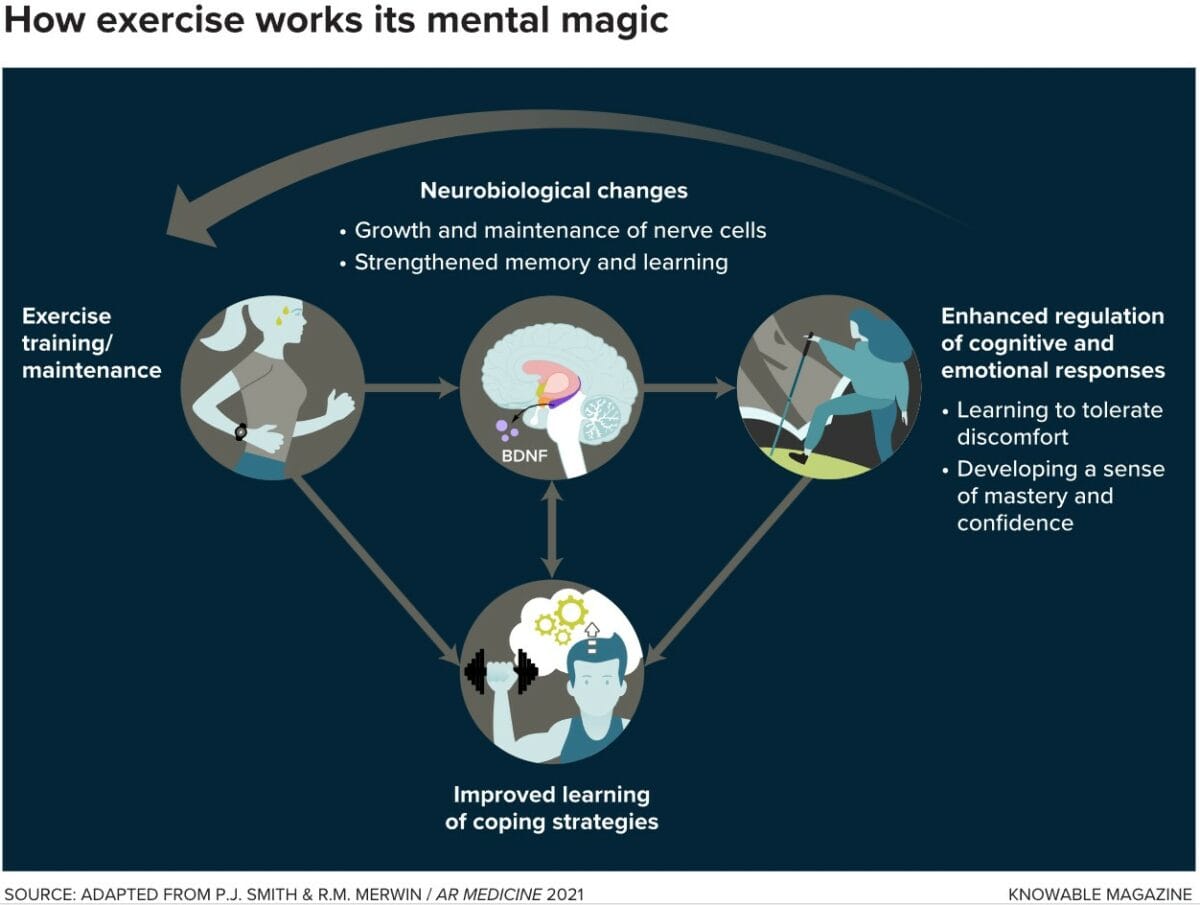
Regular exercise has numerous benefits for mental health, contributing to overall well-being and emotional balance.
Here are five key benefits:
- Reduced Stress and Anxiety: Exercise stimulates the production of endorphins, which are neurotransmitters that act as natural mood lifters. Additionally, physical activity helps lower levels of stress hormones, such as cortisol, leading to a calmer and more relaxed state of mind. Regular exercise can serve as a powerful stress management tool.
- Improved Mood and Emotional Well-being: Exercise has a positive impact on neurotransmitters like serotonin and norepinephrine, which play a crucial role in regulating mood. Engaging in physical activity can help alleviate symptoms of depression and anxiety, promoting a more positive and stable emotional state.
- Enhanced Cognitive Function: Regular exercise has been linked to improved cognitive function and a reduced risk of cognitive decline. It can enhance memory, attention, and problem-solving skills. Physical activity stimulates the release of neurotrophic factors, which support the growth and maintenance of neurons in the brain.
- Better Sleep Quality: Regular physical activity can contribute to better sleep quality. It helps regulate the sleep-wake cycle and promotes deeper, more restful sleep. Improved sleep is crucial for mental health, as it allows the brain and body to recharge and recover.
- Increased Self-Esteem and Confidence: Engaging in regular exercise can boost self-esteem and confidence. Achieving fitness goals, whether big or small, can provide a sense of accomplishment and empowerment. Physical activity also helps improve body image and self-perception, contributing to a more positive self-esteem.
What if I cannot exercise due to knee pain?
If you are prevented from exercising due to aches and pains or don’t know which exercises are good for you, get in touch with us to book an appointment with one of our practitioners who can assess you and determine the cause of the aches and pains that prevent you from exercising regularly. They can also give you a home exercise plan which can be progressed as you are able.
How do I book an appointment with a Physiotherapist near me?
Click HERE to book an appointment with a physiotherapist or chiropractor at one of our eight locations.
- Physiotherapy Etobicoke – Triangle Physiotherapy Etobicoke
- Oakville Physiotherapy Clinic – Triangle Physiotherapy Oakville
- Physiotherapy North York – Triangle Physiotherapy North York
- Mississauga Physiotherapy Clinics – Triangle Physiotherapy Mississauga
- Downtown Physiotherapy Clinics – Triangle Physiotherapy King West
- Uptown Physiotherapy Clinics – Triangle Physiotherapy Lawrence Park
- Physiotherapy Clinic Downtown Toronto – Triangle Physiotherapy Queens Quay
- Physiotherapy Clinics Mississauga – Triangle Physiotherapy Erin Mills
“Exercise offers significant benefits for your mental health, and Triangle Physiotherapy can help you integrate physical activity into your wellness routine. We provide expert physiotherapy services across the GTA, including Physiotherapy in Etobicoke, Oakville, North York, Toronto, Lawrence Park, Queens Quay, Erin Mills, Mississauga, and Liberty Village. Our team is here to support your physical and mental well-being through tailored exercise programs.”
Biking injuries can occur due to various reasons, including accidents, overuse, improper bike setup, or poor riding technique. It’s important to address injuries promptly and seek professional medical advice if needed.

Here are common biking injuries and general tips on how to manage them:
- Sprains and Strains:
- Management: Rest, ice, compression, and elevation (R.I.C.E.) can help alleviate pain and swelling.
- Prevention: Warm up before riding, stretch regularly, and ensure proper bike fit.
- Road Rash:
- Management: Clean the wound thoroughly, apply an antiseptic ointment, and keep it covered with a sterile dressing.
- Prevention: Wear appropriate protective gear, including gloves, long-sleeved shirts, and pants.
- Fractures:
- Management: Seek immediate medical attention. Immobilize the affected area and avoid putting weight on it.
- Prevention: Wear protective gear, including a helmet, and follow proper safety guidelines.
- Cuts and Abrasions:
- Management: Clean the wound with mild soap and water, apply an antiseptic, and cover with a sterile dressing.
- Prevention: Wear protective clothing, such as long sleeves and pants, and use gloves.
- Overuse Injuries:
- Management: Rest, ice, and anti-inflammatory medications can help. Physical therapy may be beneficial.
- Prevention: Gradually increase your riding intensity and distance, cross-train to strengthen supporting muscles, and maintain a proper bike fit.
- Neck and Back Pain:
- Management: Rest, gentle stretching, and over-the-counter pain medications can provide relief. If persistent, consult a healthcare professional.
- Prevention: Ensure proper bike fit, maintain good posture while riding, and incorporate core-strengthening exercises.
- Nerve Compression (Cyclist’s Palsy):
- Management: Rest, anti-inflammatory medications, and adjusting bike setup. Consult a healthcare professional if symptoms persist.
- Prevention: Change hand positions regularly while riding, wear padded gloves, and maintain a proper bike fit.
- Dehydration and Heat-Related Issues:
- Management: Rehydrate, rest in a cool place, and use electrolyte solutions. Seek medical attention for severe cases.
- Prevention: Stay well-hydrated, wear appropriate clothing, and avoid riding in extreme heat.
Always remember to consult with a healthcare professional for accurate diagnosis and treatment. If in doubt about the severity of an injury, seek medical attention promptly. Additionally, consider taking preventive measures to minimize the risk of injuries during biking activities.
How do I book an appointment with a Physiotherapist near me?
Click HERE to book an appointment with a physiotherapist or chiropractor at one of our eight locations.
- Physiotherapy Etobicoke – Triangle Physiotherapy Etobicoke
- Oakville Physiotherapy Clinic – Triangle Physiotherapy Oakville
- Physiotherapy North York – Triangle Physiotherapy North York
- Mississauga Physiotherapy Clinics – Triangle Physiotherapy Mississauga
- Downtown Physiotherapy Clinics – Triangle Physiotherapy King West
- Uptown Physiotherapy Clinics – Triangle Physiotherapy Lawrence Park
- Physiotherapy Clinic Downtown Toronto – Triangle Physiotherapy Queens Quay
- Physiotherapy Clinics Mississauga – Triangle Physiotherapy Erin Mills
“Biking injuries can be challenging, but with the right management and physiotherapy, you can get back on track. Triangle Physiotherapy offers specialized care across the GTA, including Physiotherapy in Etobicoke, Oakville, North York, Toronto, Lawrence Park, Queens Quay, Erin Mills, Mississauga, and Liberty Village. Our expert team is here to help you recover from biking injuries and improve your performance.”

